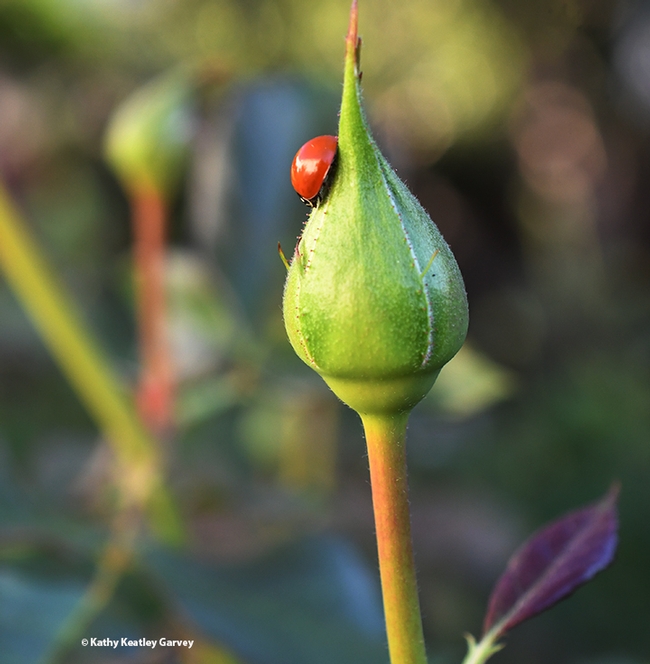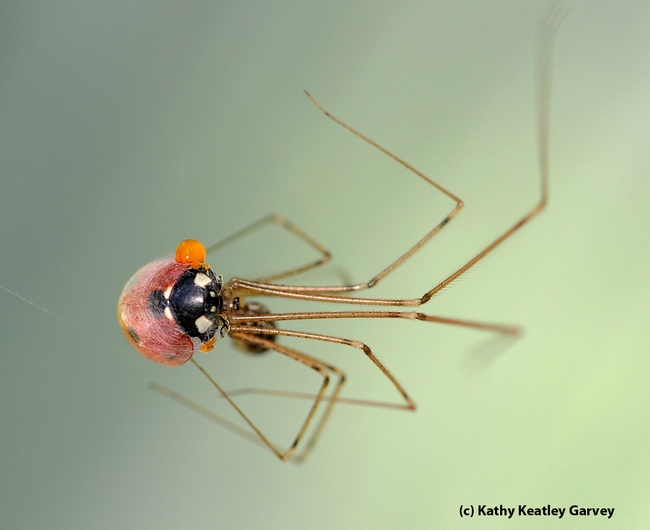If you have roses blooming in your yard in the winter--or trying to bloom--check to see if there's a lady beetle, aka ladybug prowling around.
Any aphids?
A lady beetle can eat as many as 5000 aphids in its lifetime, so they're the good guys and gals in the garden.
"These beetles have become a cultural icon of sorts because of their appearance and their beneficial habits," writes UC Davis professor Lynn Kimsey, director of the Bohart Museum of Entomology, in her insect fact sheet on Lady Bugs and Lady Beetles. "Both adults and larvae feed on aphids and other small, soft-bodied insects...They are ferocious predators on small insects."
Lady beetles do have predators, though, despite (1) their bright red "warning" coloration that yells "Hey, wait, don't eat me! I don't taste good!" and (2) the toxic chemical, isopropyl methoxy pyrazine, that oozes from their joints when they're disturbed.
Ever seen that? We did one summer when a cellar spider nabbed a lady beetle in its web and began eating it.
It probably didn't eat it all...
Attached Images:

